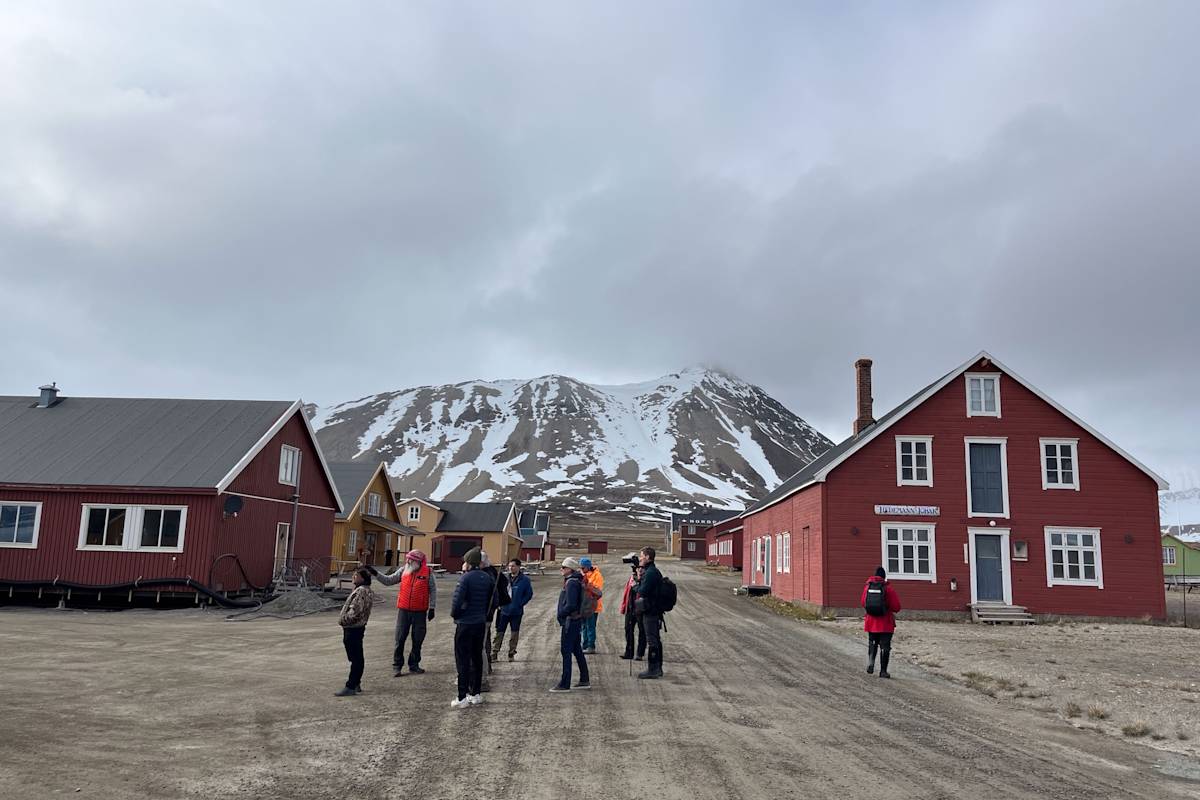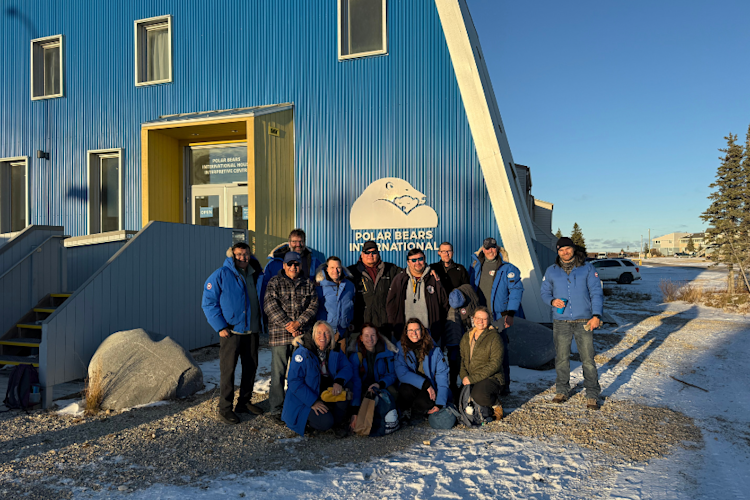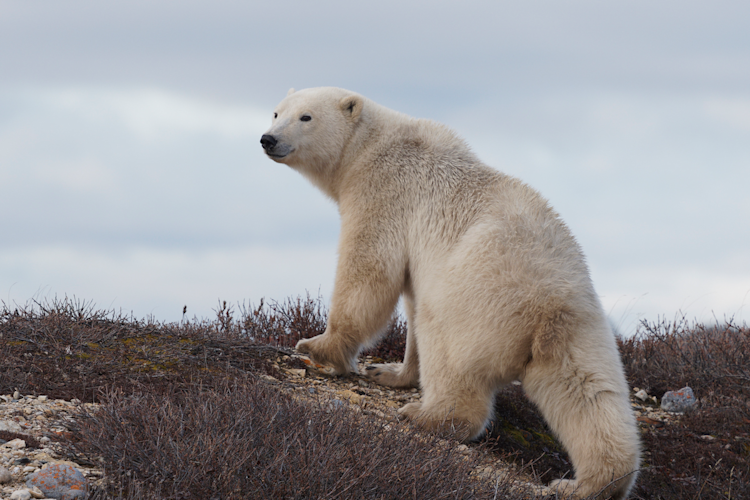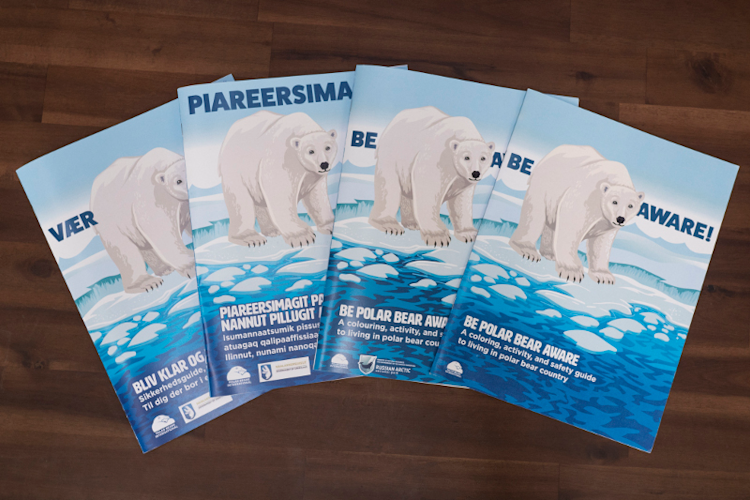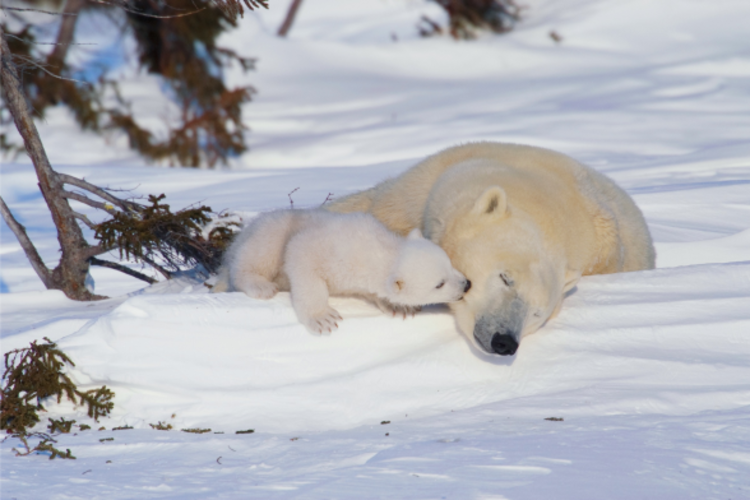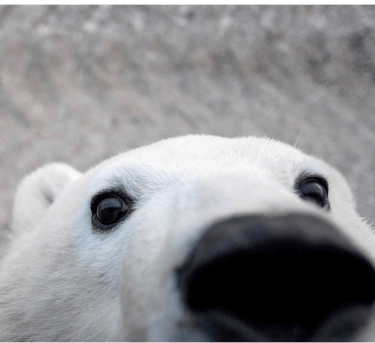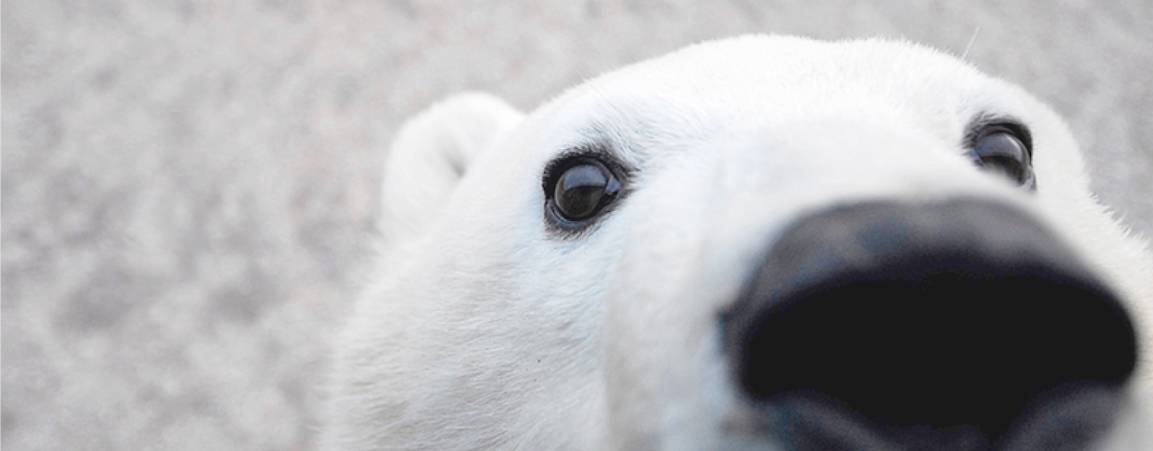Polar bear communities spanning two continents and thousands of kilometres are finding shared challenges and opportunities. Polar Bears International brought representatives from Canada’s Hudson Bay coast to Svalbard, Norway to share their knowledge and learn how a very different town lives alongside polar bears.
Jessica Power is in Svalbard, the Arctic archipelago far to the north of Norway. It’s far from her home in Churchill, a small town on the coast of Canada’s Hudson Bay, famous for its large population of polar bears each autumn. She’s looking around and marveling. Not at the beauty of the glaciers plunging into the sea, nor at the walruses lolling on a sandspit. What has her so rapt is the interior of a large building with piles of garbage. Jessica is chief administrative officer of the Town of Churchill, and what she’s seeing is beautiful to her, a building that helps people in Svalbard’s main town deal with garbage that might otherwise be a powerful attraction for polar bears. Churchill used to have its own such building before it burned down last year, but it was never this big or as well-organized.
Jessica has been brought here, along with Churchill’s mayor, and a representative of a regional Cree organization in Ontario further down the Hudson Bay coast as part of a community exchange. Organized by Polar Bears International, this exchange is part of a continuing effort to provide communities that live with bears the tools and inspiration to improve coexistence. Last year, representatives from Svalbard and Ontario came to Manitoba. This year, it’s the Canadians’ turn to see how people in Svalbard operate.
Living with polar bears: challenge and opportunity
Polar bears, particularly in the southern parts of their Arctic home, are spending more time on land. The sea ice that provides them with a platform to hunt the seals which are an important part of their diet is diminishing in extent and duration with climate change.
The people who live close to the bears in Arctic communities are seeing these differences, and are starting to see polar bears more often in and around their communities and cabins as the bears wander the land for longer periods. The bears can present a threat. They can also bring opportunities, as seeing them is the thrill of a lifetime for some tourists and locals alike. In some Arctic communities, people are grappling with how to maximise the opportunities while diminishing the threats to the bears from human responses to their presence.
“Part of being a polar bear conservation organization is making sure people who live and work in polar bear country are safe, and also that the polar bears are kept safe”, says Geoff York, Polar Bears International’s senior director of policy and research.
“The idea behind the Community Exchange program was to bring people together who live and work with bears in different contexts and different parts of the world so they can share ideas, share concerns and share solutions.”
The inspiration flows both ways
Although the participants live on different continents, they have a lot in common. Not only do they have the shared experience of living alongside polar bears, but they all face the challenges inherent to remote communities with unique infrastructure needs.
The garbage handling here has inspired the Canadians to go home with fresh energy and ideas for how to improve. As garbage is a big draw for bears, handling it better is a key element in reducing conflict. Once a bear finds an easy food reward, they become much more difficult to manage.
The information and inspiration flows both ways. The people in Svalbard don’t know as much as the Canadians do about the behaviour of bears — fewer bears come into communities and the human residents tend to be temporary, spending only seven years there on average. In contrast, members of the Canadian contingent have grown up with the bears and benefited from knowledge handed down through generations. They have a better sense for when a bear is approaching with curiosity, or when it is showing more aggression. This helps them better prepare for any encounters. This emphasis on learning bear behavior may affect formal training for professionals in Svalbard.
But the true value of the exchange is what happens after the participants have returned home. “What we’re really after is helping people create long-term relationships”, says York. “A week from now, a month from now, five years from now, they can reach out to their counterpart in another northern community when a problem arises.”
“Over time, we hope we'll be able to bring in more people and grow that community even further.”
Inspiring hope for peaceful coexistence
The people on this exchange are keen to keep the information flowing between them. While the capacity, the regulations, culture and language may be different, the passion for peaceful coexistence with the bears is one thing that unites and inspires them.
“People who live, work and recreate in polar bear country don't want to have negative impacts on polar bear conservation”, says York. “They want to do the right thing. And so just seeing them work together and puzzle through some of these things and trying to come up with a better way, a better tool, a better regulation — that definitely gives me hope.”
